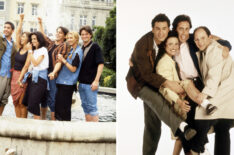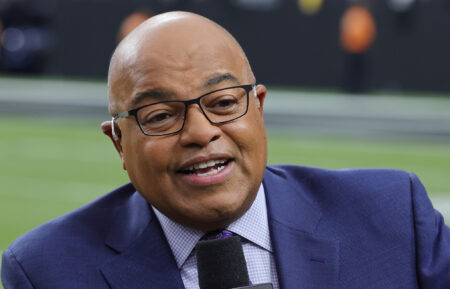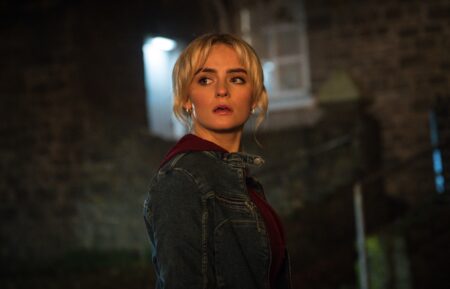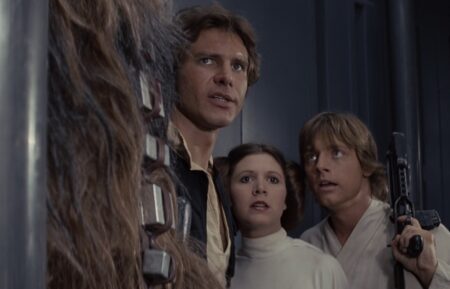Comedy TV Director James Burrows Reflects on Career & Weighs in on ‘Cheers’ Reboot Potential

Q&A
On a June afternoon in Austin, a clip reel of scenes from comedies like The Mary Tyler Moore Show, Laverne & Shirley, Cheers, and Friends has an audience at the annual ATX Television Festival howling with laughter. But one person watches with tears in his eyes: TV veteran James Burrows (above, inset), who, over the span of a five-decade career, directed all these famous faces — Moore, Ted Danson and Shelley Long, Kelsey Grammer, and Jennifer Aniston — and helped shaped their now-classic sitcoms into the shows we know and love.
As ATX honored Burrows, 82, with the festival’s Achievement in Television Excellence award, TV Guide Magazine’s West Coast bureau chief moderated a discussion with the 11-time (!) Emmy winner. It was a walk down memory lane that included everything from his first big break to the secret of his directing success to whether we’ll ever see a Cheers reboot.

Valerie Harper, Mary Tyler Moore and Cloris Leachman on The Mary Tyler Moore Show (Credit: CBS via Getty Images)
Your career started in the theater with your writer-director father, Abe Burrows. How much did that impact you being a TV director?
James Burrows: What I do, the multi-camera situational comedy in front of a live audience, is theater; it’s not television. Everything has to do with staging a play and the reaction of the actors. Then the last two days, I bring in cameras to cover the play. It’s all about pleasing the audience, and you’ve got to make them laugh. We never had fake laughter on Cheers because if a joke didn’t work, [the writers] changed the joke.
You worked with Mary Tyler Moore on Breakfast at Tiffany’s, her 1966 musical that your father directed. During her ’70s sitcom hit, you sent her a letter and, eventually, landed your first TV directing gig. If you hadn’t sent that letter, would your career have played out differently?
Absolutely! I did write a letter to her, and [Mary’s then-husband] Grant Tinker called me two weeks later and said, “We want to bring you out to Hollywood to do a show for MTM Productions, because we want stage directors.” That’s how it all began.
Amazing. When did you realize a career directing television was going to work out?
It was an episode [of The Mary Tyler Moore Show] where Lou was in Rhoda’s apartment, so Mary and Lou are working and living together. It was a bad script and I worked as hard on it as I could. As I was walking to the stage to shoot it, Mary said to me, “We feel our investment in you has worked out.” So right then and there I knew I could work in the [MTM]company. I got The Bob Newhart Show. I got Rhoda. It was the world-class comedy television workshop.
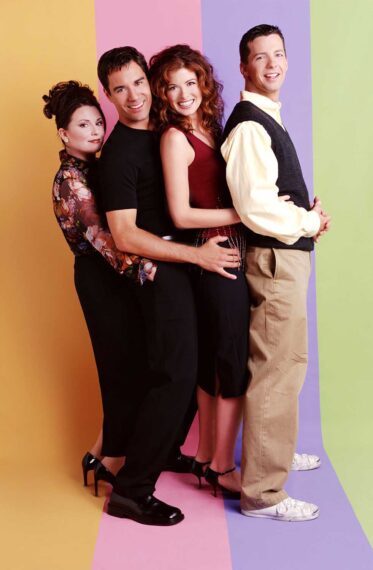
Will & Grace (Credit: CHRIS HASTON/NBCU PHOTO BANK)
You’ve said that you don’t hang out watching the monitors during a sitcom taping. Why is that?
It’s the theater. In the theater, you’re in the back of the house watching the action. You want to hear the rhythms; 90 percent of humor is surprise, and if you know what’s coming, you’re not going to laugh. I like to be close to my actors. The smell of them makes me happy.
You directed every episode of Will & Grace — original and revival — and most of Cheers. What does that consistency do for you and the show?
It helps on a show to have a resident director, and since I was one of the creators of Cheers, I did as many [episodes] as I could. My first job as resident director was on Taxi, which was the most difficult show I’ve ever done. From the writers to the interplanetary cast that we had, it was a huge set plus the first time four film cameras were used.
The Live in Front of a Studio Audience specials are actually live, so how were those to direct?
Scared the pants off me! I’m not with the actors. I’m in a truck with the technical people. We’re doing All in the Family and The Jeffersons and I have to be on the ball in the truck saying, “Don’t cut until I click, because I think this is going to get a big laugh.” It’s crazy in that truck, but I’ve done two and I had a great time.
You’ve done a little of everything in comedy. Anything left on your bucket list?
I really wish somebody would write a great sitcom script again. I like to say I attended the [sitcom] funeral about four times and always it popped out of the coffin. This time it’s not, and I don’t know why. [Two and a Half Men and Young Sheldon cocreator] Chuck Lorre, who’s a dear friend, kept it alive for a long time, but right now I’m not sure. Frasier [Burrows is directing two episodes of the upcoming revival] will be a multi-camera on a streaming service, which is totally rare.
You’ve directed over 75 sitcom pilots to series. Some are like a Friends, some are not. How do you know whether to say yes when a pilot comes your way?
It starts with the words on the page and the execution of the concept. A bar in Boston, but they brought on a Hepburn and Tracy relationship. Will & Grace was high concept in the fact that two of the characters were gay, but the execution was important. In Friends, it was six people sitting around a coffeehouse, but the writing was so good.
If somebody said “Let’s reboot or revive Cheers…”
No. No, you’re not going to touch that. We talked about going on after Ted [Danson] left and we said, “No, this is it. Wrap it up, put it out there on a satellite TV and [syndication], and let people enjoy it.”


